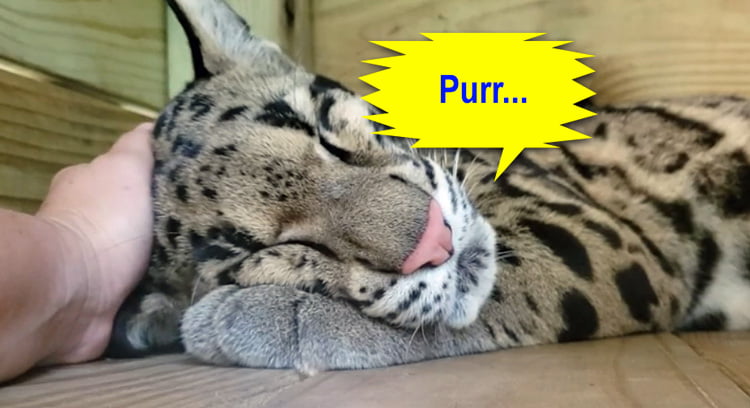 |
| Human-cat interaction which is likely to elicit a purr from the cat and warm words and a smile from the person. Picture: Pixabay. |
Purring
But purring does not always mean contentment. There is a multi-functional aspect to its existence. It obviously means contentment. We all know that. But why do domestic cats purr when they are in a veterinarian's consultation room about to be euthanised, which does happen sometimes? Under these circumstances it means that they want affection. They are looking for a condition under which they can purr because they are frightened. It's a kind of request. It may also be a way for the cat to feel better. It may also be a way to tell the world that they are not frightened. It's a bit like a person whistling when he's terrified. People tend to hide their fear and certainly that applies to cats.
You can see that we don't know exactly why cats purr except that they purr when they are content. But the reasons are far more subtle and nuanced than simply that.
You can see that we don't know exactly why cats purr except that they purr when they are content. But the reasons are far more subtle and nuanced than simply that.
Kneading
As to kneading, it is far simpler to explain this feline behaviour. They do it, as mentioned above, for the first time in their lives when they want to express that colostrum from their mother's breast. But then they do it all the time, depending upon the individual cat, with their human companion and caretaker. They jump on your lap and start to knead your dressing gown covering your legs. I hope the dressing gown is covering your legs because if not you might feel it. Or, you will see your domestic cat companion kneading the duvet cover or a wet towel which you just used to dry yourself with.
In each instance, the item that they are kneading smells of you. They are soaked in your scent, which kneading behaviour because your adult cat regards you as a surrogate mother and instinctively seeks the comfort of his mother's breast and the milk that she produces. It is a clear indication that the adult domestic cat is reduced to a kitten in terms of their mentality when they are with their human companion. And therefore, they behave like a kitten sometimes. And in doing this when they snuggle up to their human their memories of being nursed by their mother come to the fore and they re-enact those early days and weeks.
But sometimes, the adult female domestic cat behaves like a mother to us. When they bring in those dead or dying animals from the garden which they have so comprehensively and skilfully hunted, they want to teach you how to hunt. They drop the animal on the kitchen floor and then kill it with that bite to the nape of the neck. Or they may suffocate the larger bird with a bite to their throat. You observe and in observing you learn how they do it. At that moment you are their kitten.
You can see, therefore, that domestic cats are somewhat confused as to their status within the home. The human is dominant because they provide food and security. But in a multi-cat home there is no hierarchy. There might be a dominant individual cat who is more aggressive and in lieu of that the human is the dominant individual but it is a two layered social structure which is not a hierarchy.
Cat owners should never stop their cat kneading them. This may be difficult because it may be uncomfortable but if you do you are behaving like a very bad mother and you will confuse your cat. The mother would never do this because she is nursing her kittens. And therefore, the cat owner has to behave like a mother and be loving and supportive towards their kittens. This does not include pushing them away because it feels uncomfortable. The best way to deal with this, if your cat consistently kneads under certain circumstances, it to prepare for it and wear clothes which protect you. You will know when it is going to happen because cats are slaves to routines. They will respond to those circumstances in the same way each time so it is predictable.
 |
| Clouded leopard purring. Photo: MikeB. |
Postscript: people ask whether the wild cat species purr. Some do and some don't. The lynx and the clouded leopard, for instance, purr but it is said that the big cats don't. They don't have the voice box to do it. The clouded leopard is a medium-sized wild cat species and when he or she purrs it is a hugely resonant and loud sound which is highly enjoyable to listen to.

No comments:
Post a Comment
Your comments are always welcome.